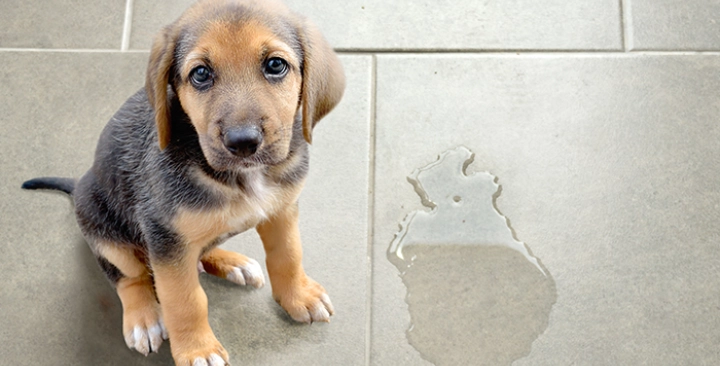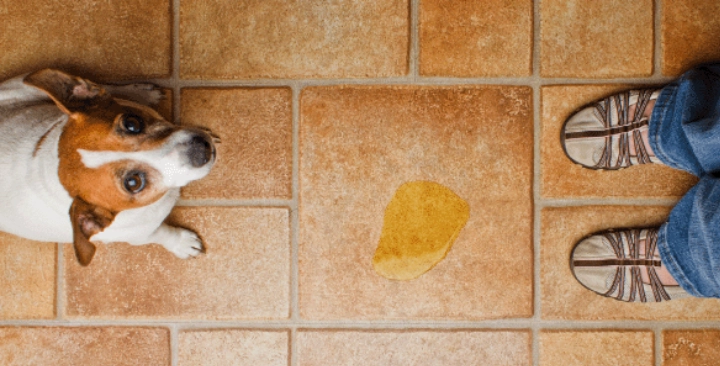How to train your dog to the toilet in 25 steps?
July 30, 2023
How to train your dog to the toilet in 25 steps?
- Theoretically, training dogs to go to the bathroom and urinate in a specific place is easy.
- The biggest problem is the wrong information and advice circulated on this subject.
- The puppy naturally and instinctively learns not to urinate in the place where he eats and sleeps, even on the street.
- The subject differs in its difficulty from one dog to another, some dogs learn quickly, and others, it will be a problem for them for a while.
- Always maintain patience, calmness, and continuity in the process of training dogs in the bathroom.
- It usually takes an average of 3 months to fully train a puppy.
- The size of the dog can be an indicator. For example, smaller breeds require more trips to the bathroom outside than larger dogs.
- The puppy’s pre-living conditions are another challenge.
- You may find that you need to help your puppy or dog break old habits.
- In other words, it is possible to bring a dog who used to make a bathroom in the same place where he lives.
- During training, do not worry if relapses occur.
- As long as you continue with the program, he will learn.

When should I start training small dogs in the bathroom?
- The earlier, the better. Complete control of the small dog in the muscles responsible for excretion and urination occurs at 3 to 4 months.
- Still, I personally prefer to start training from the age of 45 days for a simple reason, organizing the bathroom process in dogs is part of a daily routine that the dog deals with as one piece.
- Being fully attached to this routine early on makes the training process very easy.
- Toilet training in dogs takes longer as the dog gets older.

Steps to train a dog to go to the bathroom and urinate in a specific place:
1 – Determine space for education, whether in a cage or bathroom or outside the house completely.
2 – The most important thing is to organize fixed food times and not give the dog any extra food between meals.
3 – Establishing appointments and changing the dates for the puppy to go to the bathroom during the education period will make it very difficult for the puppy.
4 – All appointments in a dog’s daily routine should be kept consistent and scheduled, including eating, bathing, sleeping, training, and going out.
5 – The best times for training dogs in the bathroom are in the morning at the beginning of the day, after meals, after playing, and at the end of the night.
6 – Fixing the place Take the puppy to excrete and urinate in the same place each time, and he will search for his scent and stay outside with him until he excretes completely.
7 – Encouragement and reward. Every time your dog does that in the specified place, give him a reward and encourage him. The reward may be walking with him a little after taking it out. Linking the process of training dogs to the bathroom with the idea of going out will make it very easy.
8 – Cleaning well. At the beginning of training the dog in the bathroom and before complete control of the muscles, the dog will break that system more than once. It is very important to clean any place where it excretes and remove any smell so that the dog does not associate the place with the idea of urinating or excreting.
9 – There are a lot of packages in pet stores that completely remove stains and odors; the usual cleaners inside the house do not do that; the dog retains with it the ability to distinguish the smell.
10 – Training dogs in the bathroom using a crate or special pads.
11 – Before the end of the vaccination period, the veterinarian will advise you not to let the dog out on the street. In this case, we will train the dog to use the bathroom using pads equipped for this purpose, available in all shops, and have the ability to absorb liquids strongly.
12 – Whether you will use a crate or pads, make sure it is large enough for the puppy to stand, turn around, and lie down.
13 – I absolutely do not prefer the process of confinement inside the cage until it excretes. Linking the excretion process to something psychologically harmful to the dog will spoil the training process, and usually, the dog will prevent the excretion process and will urinate immediately after leaving the confinement.
14 – Remember that using pads is a temporary solution until you can take the dog outside.
15 – As you use the pads for training, you can slowly and gradually move them toward the door the dog will be exiting from when it’s time to go out. This will build an association in his mind between that door and going to the bathroom.
16 – In times of lack of control, the first piece of carpet the dog finds that is far from where she sleeps and eats will become a target.
17 – Why do puppies tend to poop on the carpet instead of the easily cleaned tiles? Because the carpet is soft under their feet and makes them think they are standing on the grass.
18 – Signs a dog needs to go outside
It is necessary to respond as quickly as possible to the signs of the dog’s need to excrete because his habit of ignoring these signs until he is forced to excrete will make him in the future ignore the action of the signs in the first place.
19 – Wailing, circling, or sniffing at the floor, barking, barking, or scratching at the door are all signs of getting out. Take it out immediately.
20 – Tips you must follow while training dogs in the bathroom.
21 – Don’t teach your dog to be afraid. It is strictly forbidden to punish the dog if the bathroom regime is broken.
22 – If you see the dog or puppy start excreting in a different place, clap loudly, or make any sound that knows that he has done something unacceptable, then take him to the bathroom, and after he finishes excreting, give him a reward.
23 – Puppies are not able to associate emotion with the event. If you see traces of urine or stool without seeing him doing it, don’t get angry or upset; ignore it.
24 – You can use commercially available types or use carbonate to absorb odors and vinegar to absorb dyes.
25 – To remember. Breaking the bathroom training system in small dogs is common up to the age of one year, whether due to incomplete training or a change in the environment around the dog and if the problem persists, consult the veterinarian to determine whether there is a pathological cause or not.









